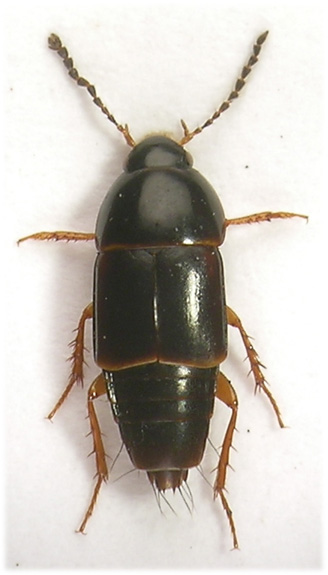
The almost entirely dark colouration and broad fusiform shape will soon become obvious but specimens should initially be taken for examination.
4.5-6.5mm. Elongate oval, upper surface dark, generally with hind margins of pronotum and elytra narrowly testaceous. Legs testaceous. Antennae dark with first four segments lighter, sometimes obscurely so. Head finely punctate and with mostly transverse microsculpture, narrowed in front of eyes which are protruding and almost touch the pronotum in usual setting. Antennae 11 segmented, inserted under side margin of head outside the base of mandibles, basal segments elongate, 3rd longer than 2nd or 4th, segments become more quadrate towards apex. Palps testaceous, last segment of maxillary palps longer than penultimate. Pronotum transverse (3:2), evenly rounded and distinctly bordered, front and hind angles round, testaceous colour to hind margins may continue laterally but not to front angles. Finely punctate with dense, wavey transverse microsculpture (X40). Elytra longer than pronotum, 1.2-1.4 X along midline, quadrate or slightly transverse and bordered laterally. Finely punctate and with wide transverse microsculpture (X40), without striae, suture without borders. Sometimes obscurley red inside humeral angle. Pronotum and elytra glabrous, without lateral setae. Abdomen evenly tapering, finely pubescent, punctate and with dense transverse microsculpture (X40). Side borders distinct and raised, without setae. Fourth and fifth visible segments with a long lateral seta. Terminal segments characteristic for this species and sexually dimorphic. Front tibiae with three rows of spines which vary in size between individuals but always with a strong apical spine on inner surface. Mid and hind tarsi with four groups of long spines. Tarsi 5-5-5, segments 1-3 of front tarsi dilated in male. Claws smooth.
Description from 4 Watford specimens at X40
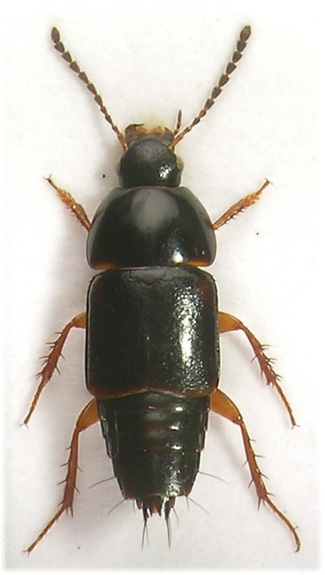
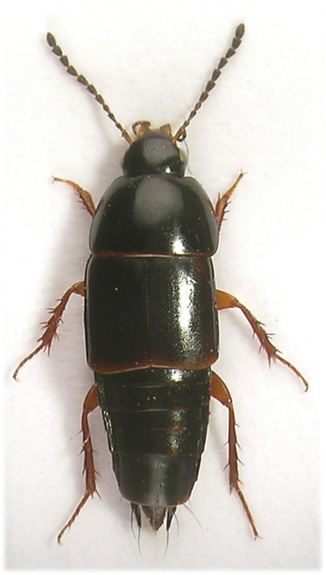
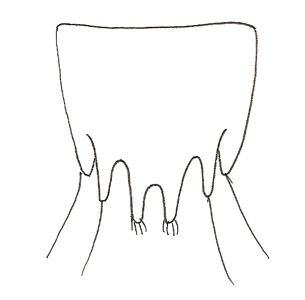 8th Sternite Female |
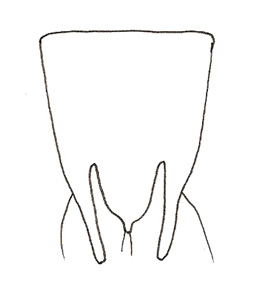 8th Tergite Female |
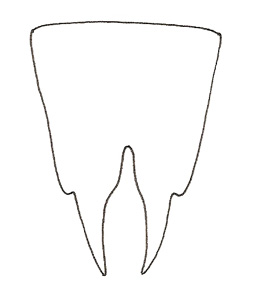 8th Sternite Male |
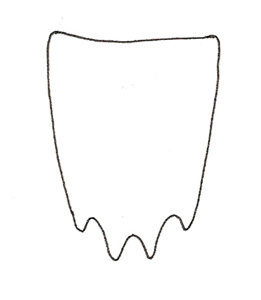 8th Tergite Male |
Home